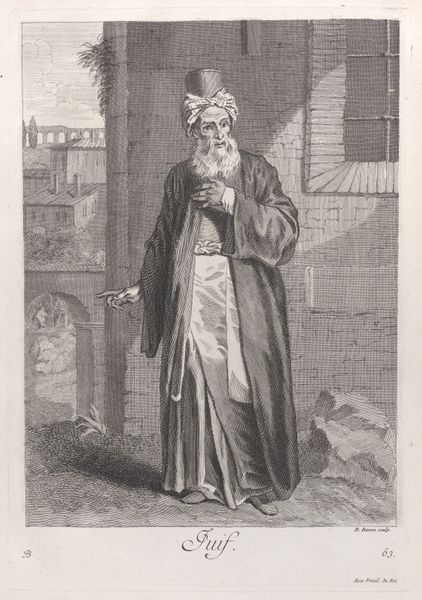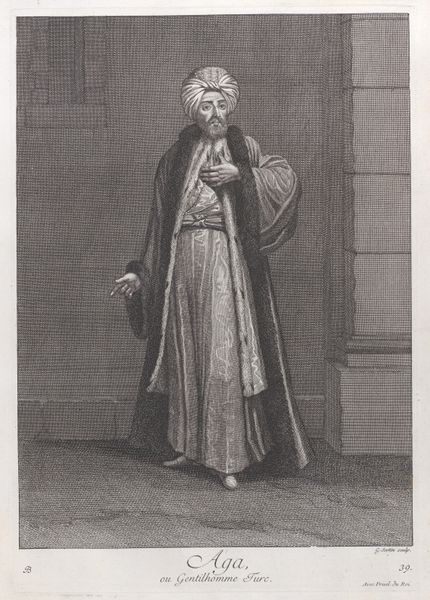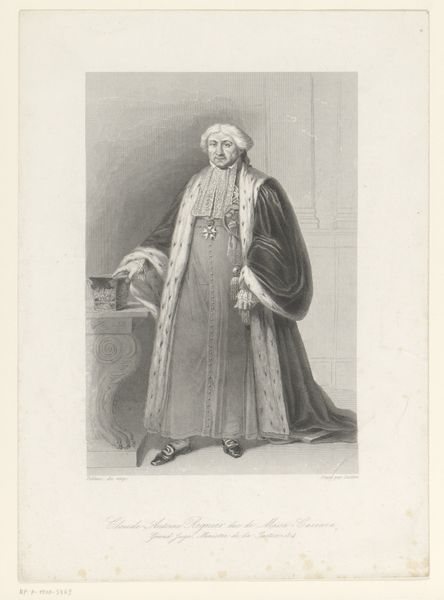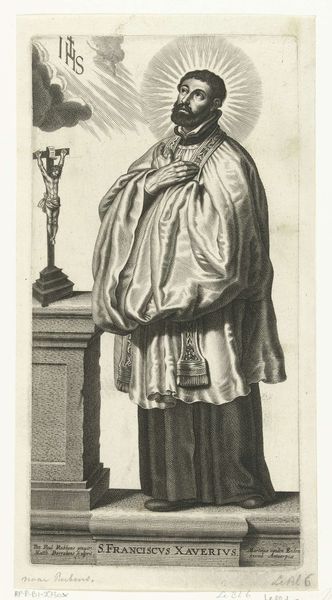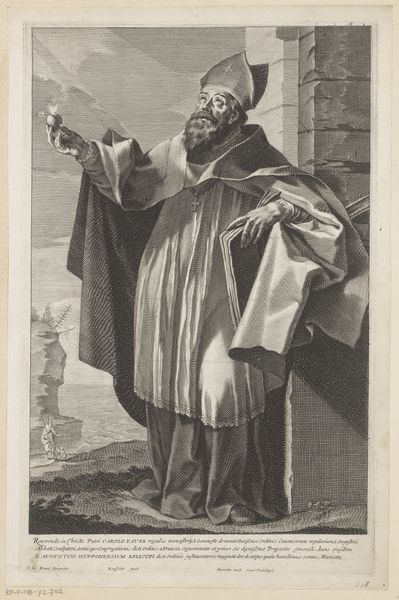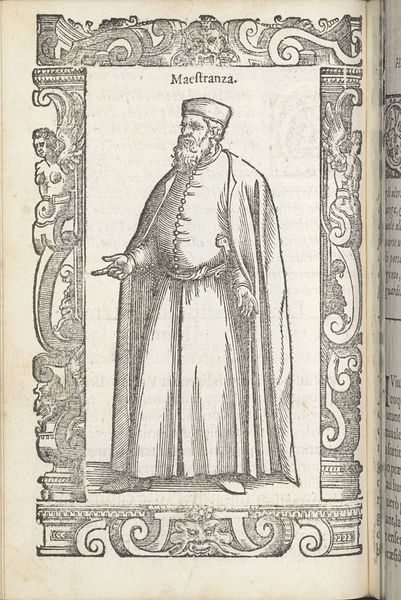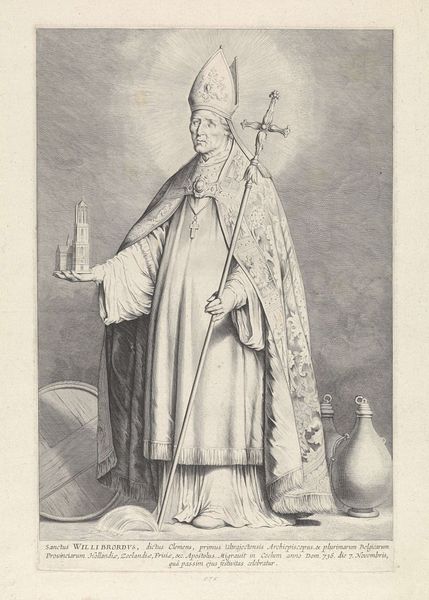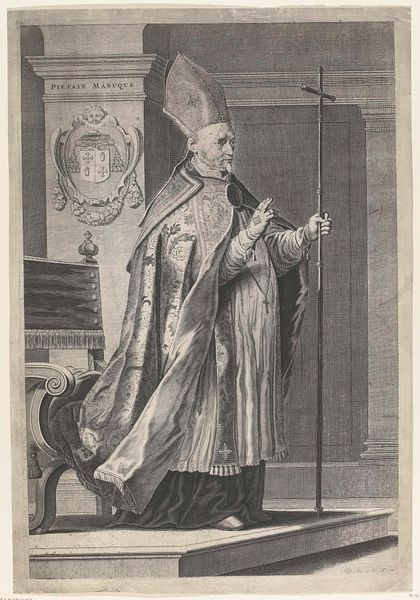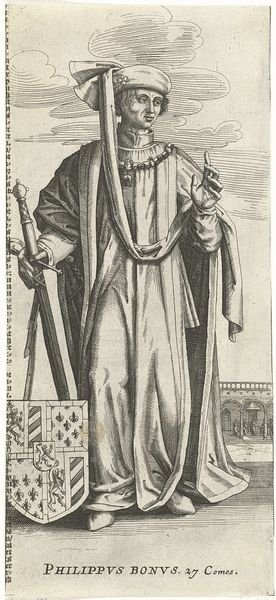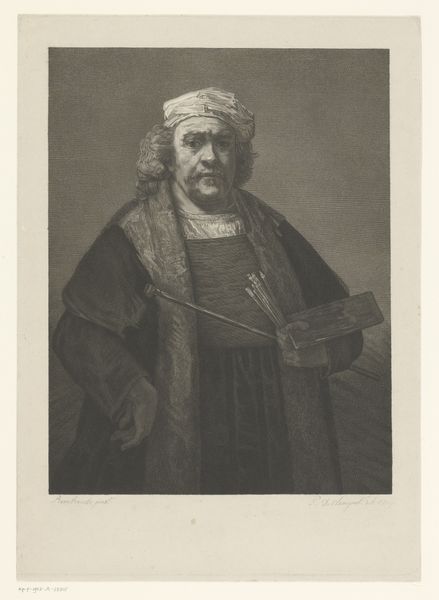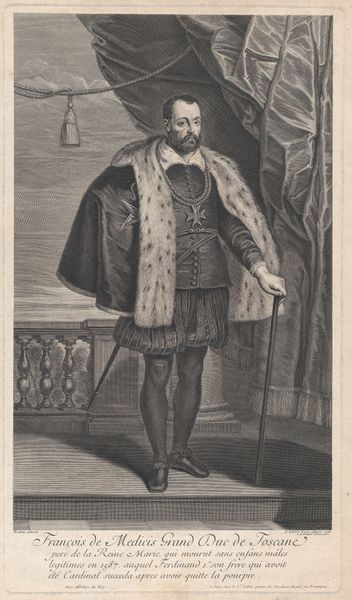
Le Capitan-Pacha, ou le Grand Amiral en habit de ceremonie, plate 36 from "Recueil de cent estampes représentent differentes nations du Levant" 1714 - 1715
0:00
0:00
drawing, print, engraving
#
portrait
#
drawing
#
baroque
# print
#
orientalism
#
men
#
portrait drawing
#
islamic-art
#
genre-painting
#
history-painting
#
engraving
Dimensions: Sheet: 16 7/16 in. × 12 in. (41.8 × 30.5 cm) Plate: 14 3/16 × 9 7/8 in. (36 × 25.1 cm)
Copyright: Public Domain
Editor: This is "Le Capitan-Pacha, ou le Grand Amiral en habit de ceremonie," a print by Jean Baptiste Vanmour, made around 1714-1715. The level of detail is remarkable. It gives me a sense of formality, maybe even a slight exoticism, but I'm curious about its historical context. What do you see in this piece? Curator: Vanmour's work is fascinating because it embodies a specific European gaze upon the Ottoman world. This print, part of a larger collection depicting different nations of the Levant, operates within a historical context of burgeoning trade and diplomatic relations. The meticulous rendering of the Capitan-Pacha's ceremonial garb, his pose, and the architectural backdrop speak volumes about how Europeans were constructing their understanding – and often exoticizing representations – of Ottoman power and culture. Do you think the artist saw his role as ethnographic documentarian? Editor: That's an interesting perspective. It hadn't occurred to me that it might be slightly…biased. He doesn't seem to idealize him or put him in any particular action; there is some neutrality to this portrait. Maybe I had just assumed a sense of neutral documentation. Curator: Indeed, it’s the very act of capturing and categorizing these images that becomes a form of cultural power. The details chosen to be emphasized – the lavishness of the garment, the implied stoicism of the admiral – would have shaped perceptions for a European audience largely unfamiliar with Ottoman realities. In what ways do you think institutions today impact how this work can be viewed and understood by the public? Editor: So, it's less about individual intention and more about the broader context of how these images were produced, circulated, and ultimately consumed, right? Considering the time and now, institutions, like museums, provide context and attempt at nuance that allows this art to become an educational tool, or at least to avoid simply sensationalizing other cultures. Curator: Exactly. Recognizing that legacy, we can be more critical of the power dynamics inherent in cross-cultural representation and how art contributes to shaping, reshaping, or cementing social or cultural views. Editor: Thanks, this has given me a new framework through which to understand this work. Curator: My pleasure, thinking about how art reflects the dynamics of social structures broadens how we see imagery.
Comments
No comments
Be the first to comment and join the conversation on the ultimate creative platform.
